We Tried 5 Methods for Browning Ground Beef and the Winner Is a Game-Changer
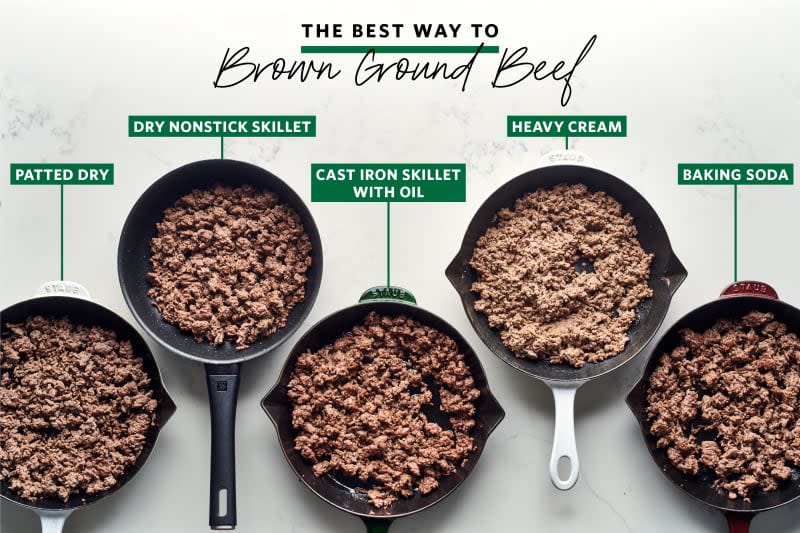
A skillet of beautifully browned ground beef is the starting point to so many of my favorite weeknight dinners. Crispy tacos, sloppy Joes, and creamy pasta dishes all call for it, and even robust, slow-simmering pots of chili benefit from the extra flavor that browned ground beef brings.
But is there a better way to brown ground beef than just dumping it into a hot skillet? We suspected so, which is why we put five popular methods to the test (just like we did when we were looking for the best way to cook pork chops!). Some promise that an extra ingredient helps with either juiciness or browning, while others aim to up the ante ever-so-slightly on crispness and browning. Here’s what we learned in this sizzling showdown.
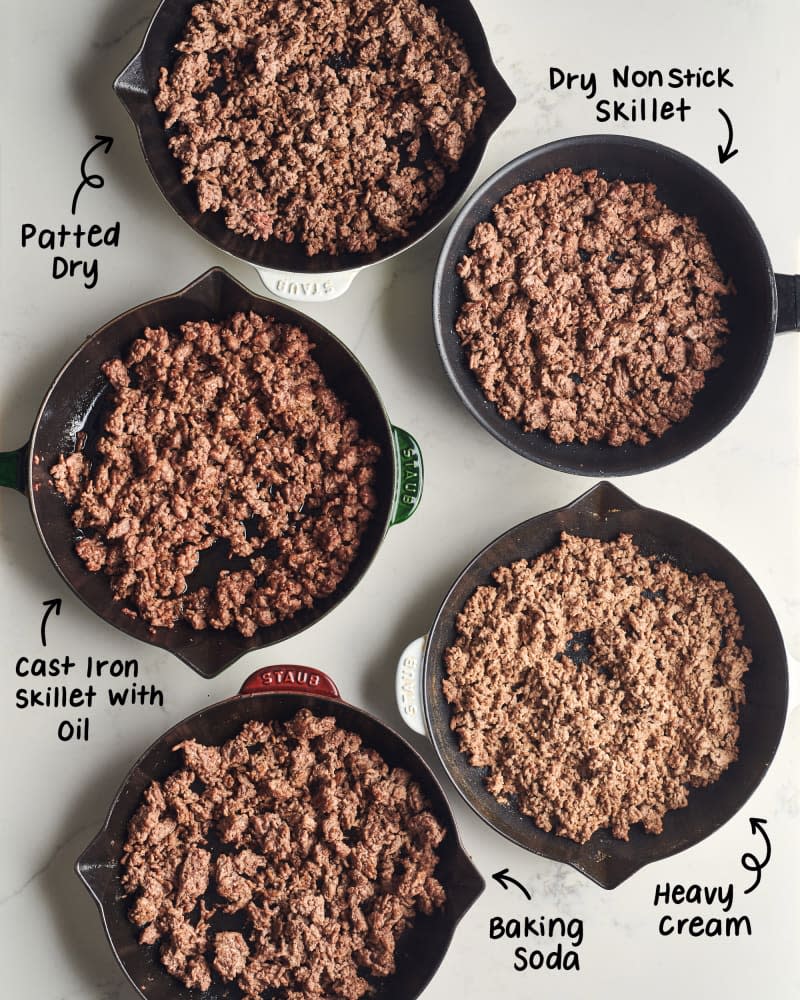
A Few Notes About Methodology
Beef: For these tests we used ground sirloin. Its relatively low fat content (10 to 15%) allowed us to really see the difference in the browning methods that called for oil. While ground sirloin has a reputation for being dry, it also has some of the best beef flavor, making it an ideal test subject for finding a browning method that crisps and browns without drying out the meat.
Tests: All of the tests were run on the same day within about 15 minutes of each other. This allowed us to use the same burner and similar pans for different methods. We taste tested each method right after cooking and then again in a side-by-side tasting after the meat had cooled.
Timing: Just one method called for an overnight prep step, but prep times are included for each method — including marinating times or suggested resting times.
Ratings: Our ultimate goal is evenly browned beef that isn’t dried out. Our final ratings take into account the ease of preparation and cook time, as well as browned and tender beef.
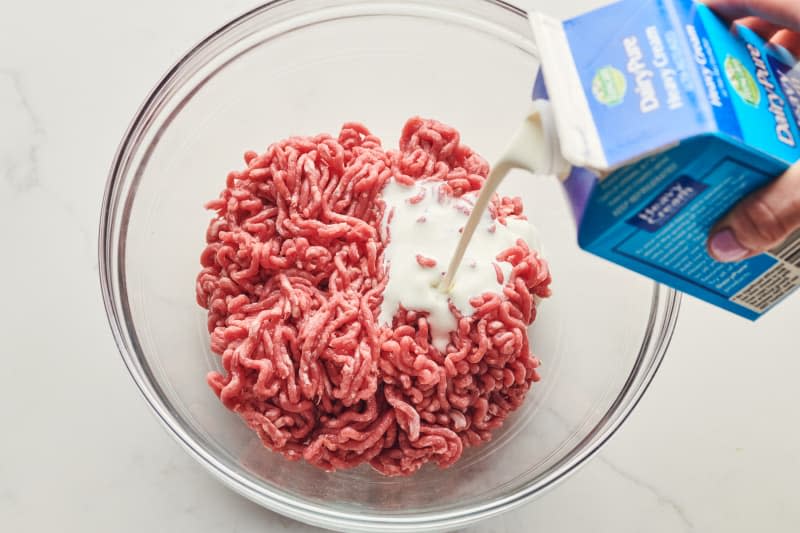
Beef Browning Method: Heavy Cream
Prep time: Overnight
Cooking time: 25 minutes
Rating: 3/10
About this method: Kitchn’s Studio Food Editor Jesse Szewczyk suggested we try this method from Lifehacker. The idea? Adding a slightly acidic ingredient (here heavy cream, and below baking soda) helps lock in moisture while also encouraging browning. Heavy cream promises to be the magic ingredient because it isn’t too acidic and it adds fat and some sugars to the beef for maximum browning. You’ll need just 2 tablespoons of cream for each pound of beef. Mix in the cream, then let the beef marinate overnight before browning it in a large cast iron skillet. We did this over medium-high heat since that was a common temperature among these ground beef methods.
Results: Aside from not being allergy-friendly or kosher, this method was so promising! Cream is one of our favorite kitchen staples — plus, doesn’t adding heavy cream to ground beef sound so luxe? The long marinade promised to make the beef extra tender too. But the results were so sad. Instead of crispy browned beef we ended up with pale, mushy meat. The heavy cream seemed to draw out moisture, creating a skillet full of creamed braised beef rather than a sizzling pan of crispy browned beef.
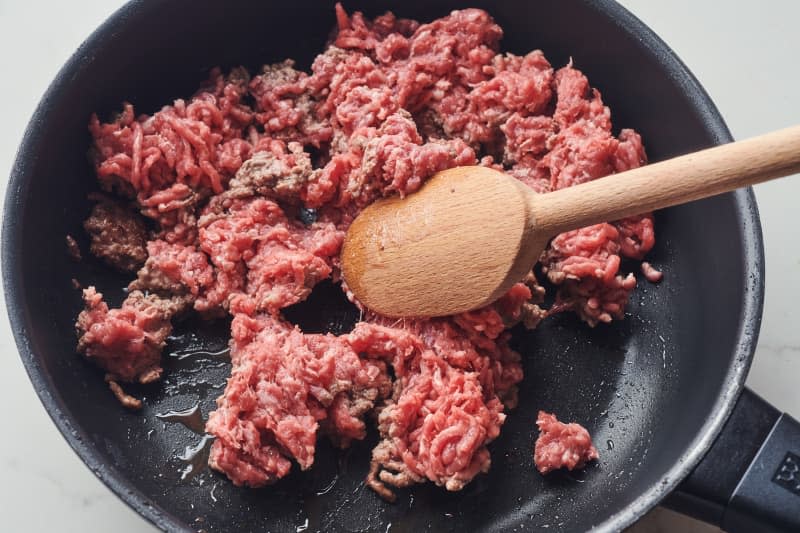
Beef Browning Method: Dry Nonstick Skillet
Prep time: 5 minutes
Cooking time: 15 Minutes
Rating: 6/10
About this method: Better Homes and Gardens offers up one of the simplest methods for browning a pound of beef: Heat a nonstick skillet over medium-high heat and add the meat. They insist that a wooden spoon is imperative for breaking up the beef into smaller pieces and getting the most surface area browned.
Results: What we liked most about this method was the assurance that all our years browning beef in cheap nonstick skillets wasn’t a waste of time. Our pound of ground sirloin cooked quickly and browned evenly, but it didn’t get as crispy as other methods and was a little bit dry. As BHG mentions, this method could easily be improved with a little bit of added fat heated in the pan before adding the beef.
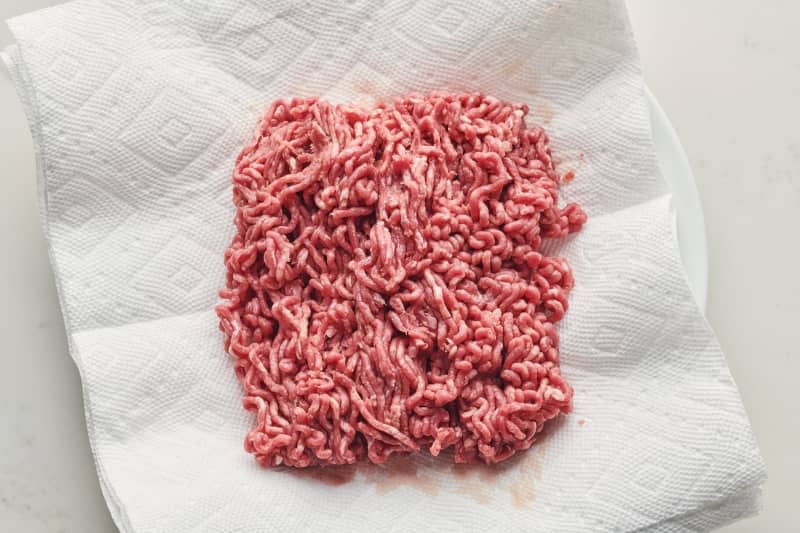
Beef Browning Method: Patted Dry
Prep time: 30 minutes
Cooking time: 10 minutes
Rating: 7/10
About this method: This technique from Bon Appetit borrows some of its logic from standard seared steak procedure: Pat the meat dry and bring it to room temperature before cooking. In theory, drying the surface of ground beef removes moisture that can make it steam instead of brown in the pan. And bringing the beef to room temperature should help it cook more evenly. It’s easy enough to pat the meat dry, and then it takes about 30 minutes to take the chill off. Next, you add the meat to a hot, lightly oiled cast iron skillet and cook it over medium-high heat. You smash it flat in the pan to maximize surface area for browning, and then flip it over in pieces before breaking it into crumbles with a spatula.
Results: This method delivered everything it promised — nice, even browning and a quick cook time — but still left us feeling a little meh. (Especially when a very similar method, below, required zero prep time and didn’t waste any paper towels!) File this method under: good in theory.
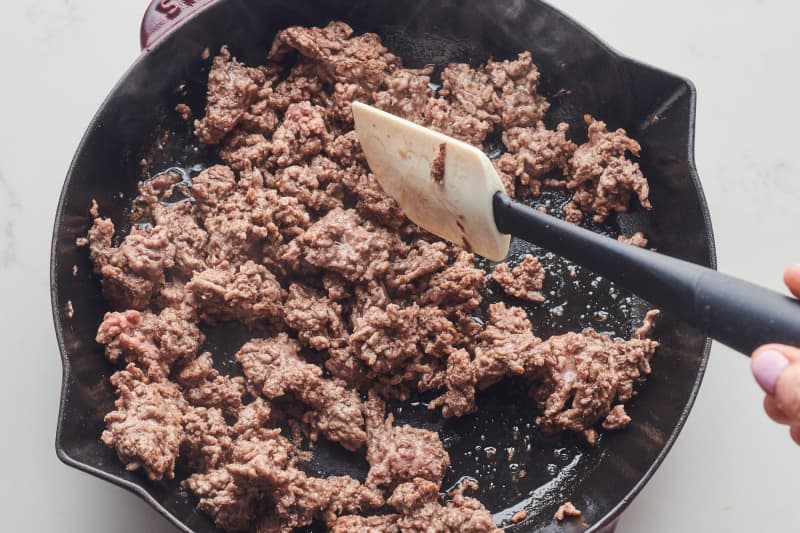
Beef Browning Method: Cast Iron Skillet with Oil
Prep time: 5 minutes
Cooking time: 15 minutes
Rating: 9/10
About this method: While this classic cooking lesson from Kitchn might seem incredibly basic, the tiny details in the recipe have a lot to teach us. You add the cold ground beef to a hot cast iron skillet with a little vegetable oil, break it into a few large pieces with a spatula, and then leave it alone for four to five minutes so it can brown. After that, you break the meat into smaller pieces, season with salt, and let it cook for a minute or two between each stir. Your patience gives the moisture a chance to cook off between stirrings, which will give you browned bits of meat instead of gray crumbles.
Results: The combination of a hot and heavy skillet and a little oil is almost like pan-frying the beef. The resulting meat is tender-crisp and deeply caramelized, thanks to the less frequent stirring and letting the meat cook for a few minutes undisturbed when you first add it to the pan. If you’re looking for a simple upgrade from your nonstick skillet cooking methods of yore, look no further!
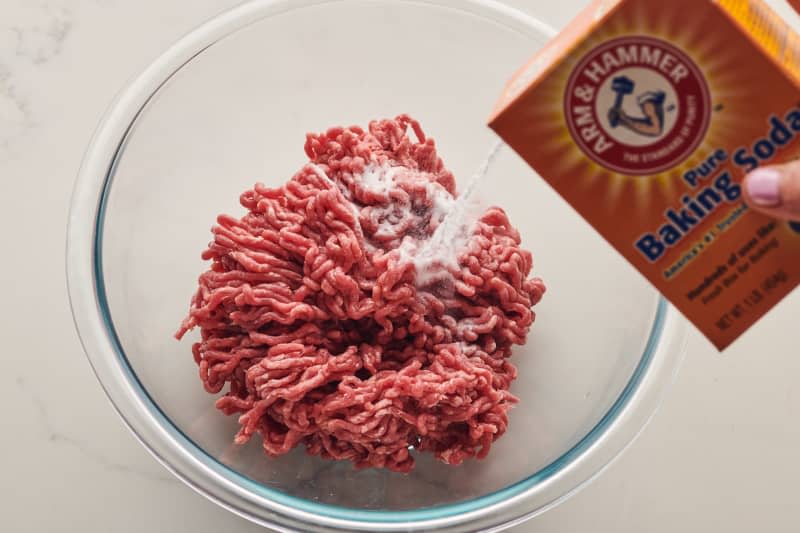
Beef Browning Method: Baking Soda
Prep time: 20 minutes
Cooking time: 18 minutes
Rating: 10/10
About this method: While we originally read about this method on Food52, they credit Cook’s Illustrated with pioneering the original technique. While Cook’s calls for a slurry of baking soda and water, both Food52 and Lifehacker skip the water and mix straight baking soda with the meat — just 1/3 a teaspoon per pound of beef — then let the mixture sit for 15 minutes. While the meat rests, grab a skillet, heat it over medium-high heat, and add some oil. The meat goes into the pan, then you give it a stir and let it cook for a few minutes. That’s it!
Results: This method felt like an absolute game-changer for dinner prep. Not only did the beef brown just as beautifully as our own classic cooking method, but the easy-to-dry-out sirloin also stayed incredibly moist during cooking and cooling. Scientifically speaking, the baking soda works by raising the pH of the meat, which inhibits protein bonding to keep the meat juicier and more tender. This change in pH also seems to encourage browning on the surface of the meat as well.
This post was originally published on The Kitchn. Read it there: We Tried 5 Methods for Browning Ground Beef and the Winner Is a Game-Changer

